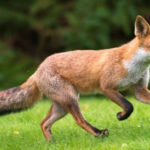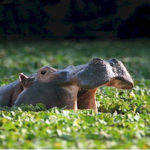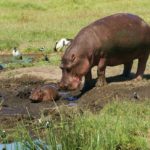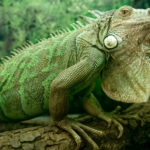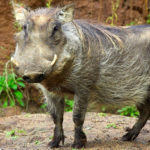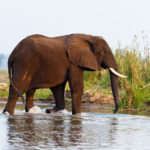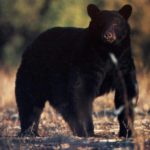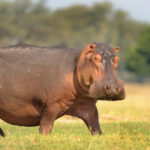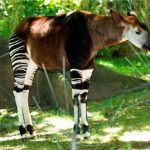Hippos – information
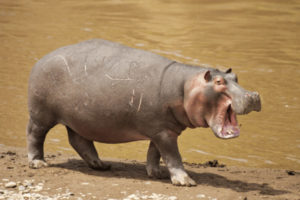 Hippos eat exclusively grass. For a day, one individual can eat up to 40 kg of greenery. It is interesting that the animals are scattered around their litter, swinging their tail swiftly from side to side. Males often defecate in the same place, using heaps of litter to tag the boundaries of their territory.
Hippos eat exclusively grass. For a day, one individual can eat up to 40 kg of greenery. It is interesting that the animals are scattered around their litter, swinging their tail swiftly from side to side. Males often defecate in the same place, using heaps of litter to tag the boundaries of their territory.
Mating takes place in February or August and is timed to a dry season. During the mating season, males make bloody scuffles. This is where the harsh nature of the hippopotamus is seen in full force!
The winner mates with the female right in the water, while in the water the baby is born. The newborn can reflexively rise to the surface of the reservoir and take the first breath. The female zealously protects the baby, and feeds it too under the water. Despite the care of adults, small hippos are very vulnerable. They still have neither thick skin, nor fat, nor canines to protect themselves, but weigh “kids” from 50 kg. Such light and weighty extraction attracts many predators.
In the water on the hippos sometimes attack large crocodiles, and on land attack lions, hyenas and leopards. There are cases when pride lions killed even an adult hippopotamus, although this is more likely an exception. To their enemies, hippos counterpose the strong jaws and group defense (a panicking hip-hop herd can simply trample on the attacker).
The local population did not often hunt for hippopotamuses, because catching such a large and dangerous animal with primitive fishing gear is an impossible task. His heyday of hunting for the hippos reached during the colonization of Africa. These animals proved to be a valuable source not only of edible meat and durable skin, but of a high-quality bone, which in its properties approximates the elephant. At the same time, hippos live well in captivity and even breed in zoos. In captivity their life expectancy reaches 50 years, and in the natural environment up to 30-40. Currently, dwarf hippos are very rare and are subject to protection.



